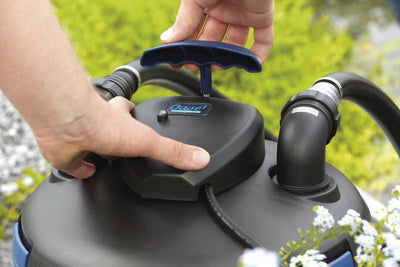If you're a dog owner, you may have noticed that your beloved furry friend loves  to mark their territory during walks by urinating on anything and everything in sight. While this behaviour can be frustrating for owners, it's actually a natural instinct for dogs that serves several purposes. In this guide, we'll explore why dogs engage in this behavior and what it means for their health and happiness.
to mark their territory during walks by urinating on anything and everything in sight. While this behaviour can be frustrating for owners, it's actually a natural instinct for dogs that serves several purposes. In this guide, we'll explore why dogs engage in this behavior and what it means for their health and happiness.
Understanding the concept of territory marking in dogs.
For dogs, marking their territory is an instinctual behavior that dates back to their wolf ancestors. Wolves use urine to mark the boundaries of their territory and communicate with other pack members. Similarly, domesticated dogs have retained this natural behavior and use urine to leave messages for other dogs in the neighbourhood. When a dog marks its territory during walks, it's essentially leaving a message for other dogs that says "I was here." Additionally, marking can serve as a way for dogs to feel more secure in their environment and establish a sense of control over their surroundings. Though it may seem like a nuisance to owners, understanding the reasons behind this behavior can help us better understand our furry friends and ensure they feel safe and comfortable during walks.
Reasons why dogs mark their territory while walking.
There are several reasons why dogs mark their territory while walking. First, it's a way for them to communicate with other dogs in the area and establish dominance over their environment. By leaving urine marks, they're sending a message to other animals that this territory belongs to them. Second, marking can serve as a calming behaviour for dogs who may feel anxious or stressed during walks. This behaviour helps them feel more secure and in control of their surroundings. Lastly, marking is an instinctual behaviour that dates back to wolves and has been retained by domesticated dogs. Understanding these reasons behind your dog's behaviour can help you better accommodate their needs and keep them safe during walks.
The role of hormones in territorial behaviour.
Territorial behavior in dogs, including marking, is closely linked to their hormonal levels. Testosterone, a hormone more prevalent in male dogs, has been found to play a significant role in territorial behavior. This could be the reason why male dogs tend to mark more frequently than female dogs. Other factors that can impact a dog's territorial behavior include age, social status, and past experiences. For example, a dog who was previously attacked by another dog may become more protective of their territory as a result. Understanding the hormonal influences on your dog's behavior can provide important insights into how to train them and keep them safe during walks.
While some dogs may exhibit a behaviour called "trumping" after urinating, it is not necessarily related to sexual maturity. Trumping is a term used to describe a behavior in which a dog scratches or flicks their hind legs after urinating or defecating. It is believed that dogs do this to mark their territory by spreading their scent.
Some dogs may start exhibiting this behaviour as early as 6 months of age, while others may not develop the behavior until later in life. It is more common in male dogs than female dogs, but both can exhibit the behavior. If you are having difficulty with toilet training your pup, you may want to consider some toilet training products to help things along.
While trumping is a normal behaviour for dogs, excessive or compulsive scratching or flicking of the hind legs after eliminating may indicate a health problem or behavioral issue and should be discussed with a veterinarian.
Training techniques to minimise excessive marking behaviour.
Excessive marking behaviour can be a nuisance for many dog owners, but luckily, there are techniques that can help minimise this behaviour. One of the most important things you can do is to establish yourself as the pack leader and provide consistent training to your dog. This can help them to understand what is expected of them during walks and reduce the likelihood of excessive marking. Some additional strategies include using positive reinforcement techniques like treats and praise when your dog exhibits good behaviour, teaching them the "leave it" command to redirect their attention away from potential marking spots, and utilising doggy wraps or nappies/ diapers in cases where they continue to mark excessively despite training efforts.
You can include toileting aides such as toileting attractants for dogs in your positive training regeime. This attractant is based on a pheromone that mimics territory markings of other dogs and encourages your dog to go to the toilet in that area. Remember that this training process takes time, patience, and consistency to be effective, so persistence is key.
© weknowpets 2023








